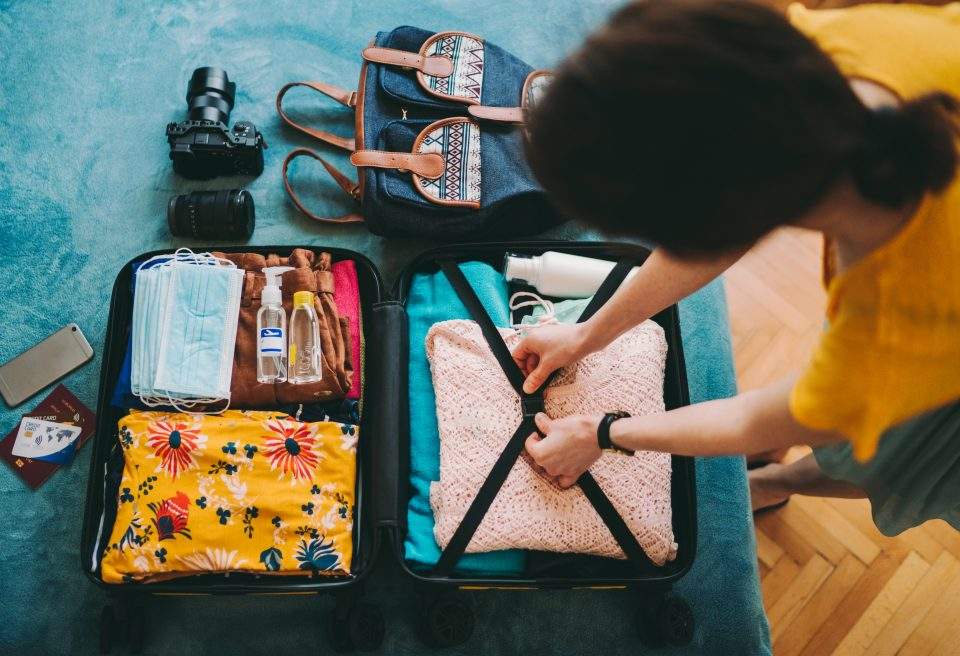Details on what insurance is available and when to buy
As the airline industry continues to weather a massive storm of rising fuel prices, inflation and financial distress, travelers are taking extra measures to ensure the safety of their trip as well as personal safety. The influx of increased airline ticket prices, and fees for checked-baggage and in-flight food and beverage service have created havoc in the air and on ground. Airlines have canceled routes, lost luggage, grounded planes and in some cases, filed for bankruptcy or completely removed themselves from the airline options line-up.
- What happens if you’re holding a ticket on one of these defunct routes?
- What do you do if you’re stranded in the airport thanks to a grounded flight or airline strike?
- How do you get home if you’re hurt during your travel and there isn’t a flight out for days?
“[Travel] insurance is right for all travelers,” says Monica Beaupre, manager of public affairs at American Express Travel. “Travelers, while diligent about travel and planning…aren’t always planning for the un-planables – the things that can happen out of the blue.”
In this day and age, travelers need to protect more than just their luggage. Depending on the type of trip you’re taking, travel insurance can be a wise investment. But knowing what to buy and how much to spend can mean the difference between insuring your flip-flops and getting cash back for your canceled trip.
Why buy travel insurance
Simply put, travel insurance protects you and your trip in the event of a delay, cancellation or airline default. Additional travel insurance is available for incidentals including lost luggage, medical emergencies and even bad weather.
“There are two primary reasons to buy travel insurance: to protect whatever upfront investment you have in your trip and secondly, today there are so many things going on with respect to travel delays and financial defaults [of airlines], travelers can’t afford not to be protected,” says Dan McGinnity, vice president of AIG Travel Guard.
Understanding the various types of travel insurance available is the first step in making an educated purchase. The basic travel insurance policies are universal but each company varies with respect to how much is covered and the various add-ons that may be useful, depending on the type of trip you’re taking.
Types of travel insurance
Travel insurance comes in all different shapes, sizes and prices. Before opting in and adding additional costs to your trip, first determine whether or not you’re already covered by insurance policies you already have. For example, does your medical insurance cover your prescriptions overseas? Does your homeowners insurance cover lost or stolen baggage? Read the fine print on your credit cards – many credit card companies have built-in travel insurance that covers lost baggage, international medical assistance, roadside assistance and more.
First, determine what type of coverage you already have at your disposal then consider one of the more popular add-ons to protect you and your family or companions during travel.
Trip cancellation/interruption: This is the most common type of travel insurance and the most highly recommend by professionals. Trip cancellation/interruption service covers you in the event you have to cancel your trip for any reason or in the event the airline or trip provider defaults financially, thus canceling your purchased trip. Generic policies state that this cancellation coverage is meant for illness, injury or death but depending on the type of policy you purchase, your travel companions might also be covered.
It’s important to note that trip cancellation insurance does not cover war, terrorist attacks or natural disasters. However, you can purchase additional travel insurance to protect you in the event of political unrest before or during your trip.
The fundamental reason behind trip cancellation insurance is to protect whatever money you might lose if the trip is canceled. For example, did you make a deposit on a cruise or purchase non-refundable airline tickets? If you’ve invested money you can’t afford to lose, purchasing trip cancellation/interruption insurance might be beneficial.
Emergency medical coverage: Medical coverage varies extensively, based on the provider and the amount of coverage you elect. Most emergency medical insurance covers an emergency evacuation from your destination if a physician determines that your treatment requires hospitalization or intensive medical attention. This type of insurance is highly recommended for adventure travelers heading to remote areas, cruise passengers or those travelers spending extended periods of time in foreign and third-world countries.
Travelers tip: Check your current medical insurance plan to determine what coverage, if any, is allocated to travel. Then purchase emergency medical insurance to supplement what you already have.
Other types of travel insurance are available. Talk to your travel agent, credit card company or insurance company to determine what type of insurance works best for your trip.
How much does travel insurance cost?
Many consumer advocates agree that inexpensive trips might not warrant the additional cost of travel insurance. However, international trips, cruises and adventure travel justify the purchase of additional travel insurance to protect you and your trip.
“The best thing about travel insurance is that it’s based on your trip cost. If you have a $10,000 trip, you’ll want to get a good amount of coverage for your trip,” says McGinnity.
The type and amount of travel insurance coverage you elect will determine how much it will cost. Most policies range from 4 to 8 percent of the total trip cost but before you buy, determine what’s really necessary. For those travelers heading to areas that might be denoted as dangerous or under political distress, McGinnity suggests purchasing an optional policy, which can cost about 40 percent above the original travel insurance policy.
When it comes to purchasing additional travel insurance, “It’s really the customer’s choice to decide what they need or want,” says Beaupre. “Being prepared for any type of occurrence that could potentially derail that trip [is a safe measure.]”
Travelers will do well if they shop around before purchasing travelers insurance. Look at policies offered by airlines, agents and credit card companies to determine what works best.
“Companies offer standard plans and a number of options/upgrades, but the important thing is today to look into travel insurance, read the policy and you’ll see it’s not complicated so you’ll know what you’re getting,” says McGinnity. “Travel insurance is really quite simple – take five minutes to understand what you’re covered with and when you’re covered.”
(Featured image: jakerust)




